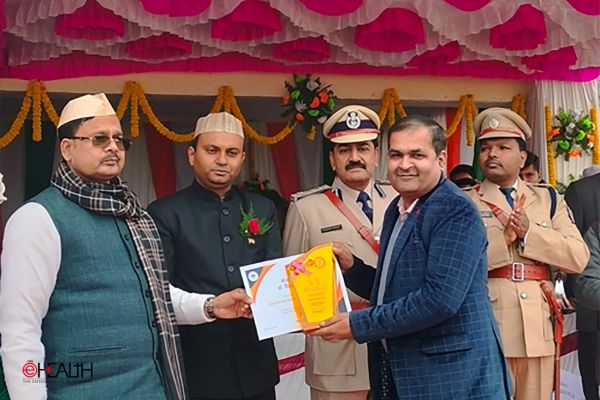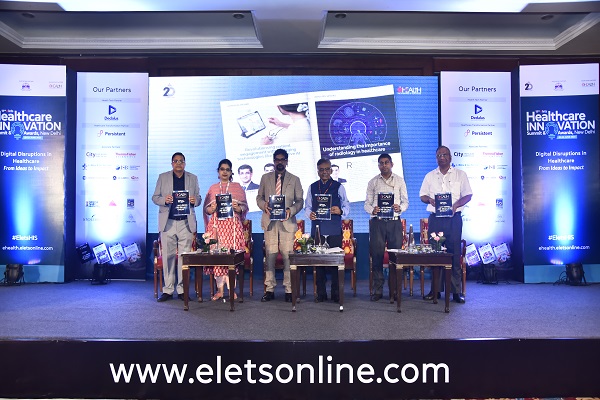 IT will play a big role in development of blood banks and blood storage units
IT will play a big role in development of blood banks and blood storage units
By Dr Harish Jachak, Manager Presales and Marketing, Birlamedisoft Pvt Ltd
We know that healthcareindustry in Indiais highly unregulated.But this may not cometrue in case of blood banks. They, onthe other hand, are under regulation.Also, nowadays opening a blood bankhas become very difficult. If you askme about growth of blood banks, Iwould say, the growth is slow. On topof that blood banking facilities arelimited to major cities only. We needmore storage units in small towns.
These regulations and statutoryrequirements make the role of ICTin blood bank very important. Bloodbank employees need to maintain atleast 10 to 15 different types of registersand records for reporting purpose.Since there are many regulatorsand each has different formats fortheir records, this process of recordkeeping is very time consuming andcumbersome.

Challenges for blood bank
Some major challenges for bloodbanks, I would summarise as follows:
Safer blood supply and storage comes at higher costs.
Growing number of infections thattransmit through blood.
Customer expectations of qualityand safety.
Strict regulations.
Motivating people to donate blood.In other words maintaining continuoussupply.
Blood transport and storage facilities.
Increasing longevity of blood and blood components
Wastage of blood and blood components.
Appealing doctors to prescribecomponents and encouragingblood banks to prepare blood components.This should optimally utilisethe scarce whole blood.
How ICT could help
Proper implementation of ICT canchange for good how blood banksfunction.
Bar coding and scanning technologycan reduce reporting errors.
Timely reminders of expiring bags,with identification of bags can makestaff to distribute older bags first(FIFO model). This will not only reducecost of storage but also savemoney lost with discarded bags.
Real time status of available stockin storage centres and/or bloodbank will help in maintaining optimallevel of usable bags.
Online data of donors would behelpful in identifying habitual donors,maintaining contact list incase of emergency, etc.
Forecasting of blood demand orpossible stock-outs in near futurewill help blood banks to plan andreplenish stock well in advance byarranging blood donation camps.
Interfacing with machines can bedone so there remains no need ofmanual entry of test results. Barcode and stickers printing further
reduces any chances of humanerror.
Web based blood banks informationmanagement systems will allowthe users to enter the data ofdonors and bags at the point of
collection. Otherwise staffs have toenter data once they come to centreform any camp. This results induplication of efforts.
Well formatted reports can sufficerequirement of any regulatingagency. No need of repeating theentries in each report.
Full array of MIS reports for administrators of blood bank facilities.
Customer support features likeSMS, online booking of blood forplanned surgeries, etc. will definitelylead to customer satisfaction.
“Role of Government and regulators suchas National AIDS Control Organisaionand State AIDS Control Societies is very critical. Government should certainlylook into matters of data banking, security ofdata and standardisation of records”

What we do?
We are developers of IT solutionsfor healthcare industry, providingservices to small to large hospitals,diagnostics centres, blood banks, imagingcentres, pharmacy shops andhealthcare operations of big industrialplants.
We have Information ManagementSystem for blood banks, bothonline and offline, catering to someof the leading blood banks in theirrespective areas. By making processof registration, blood collection, testingand cross matching, storage ofblood bags according to expiry date,blood groups, components, donor andblood bag database, monitored distributionof blood bags and reporting ofadverse reactions automated we aremaking life easy for our clients.
As I said earlier reporting is verycritical part of blood bank management,our online and offline bloodbaning management software givesmore than 40 different types of reportsand records. This allows managersto monitor all functions of bloodbank. Donor tracking has been madeso easy that blood bank can havelarge database of emergency donorshandy. Also their health profile ismaintained to avoid infected bloodentry into system at first check point.
Identification and tracking systemadminofbags gives zero chances to miss-reportingor wrong supply of blood.
Whats in future?
I see great scope of business expansionin blood transfusion related business,since most of the blood banksare running without any automationor something just for billing purpose.Blood bank, collection centres andstorage units will talk to each otherand will maintain continuous availabilityof life saving fluid. Hospitalswould be able to check status of availabilityof blood of desired group or thecomponents online and how long willit take to reach them.
Confidentiality of donor/receiverdata would be of utmost importanceand efforts would be placed to protectthem. In future I would like to seeminimal wastage of precious blood.This could be achieved by timely utilisationof near expiry stock, increasedusage of components and keeping thesupply (donors) within timely reachwhenever there is demand.
Role of Government and regulatorssuch as NACO and State AIDSControl Societies is very critical. Governmentshould certainly look intomatters of data banking, securityof data, standardisation of records,sample and blood bags tracking etc.as a policy matter.
With advancement of newer technologyin collection, separation ofcomponents and storage of blood,ICT had already entered blood banks.Need of the hour is a system for managingthe information.
Be a part of Elets Collaborative Initiatives. Join Us for Upcoming Events and explore business opportunities. Like us on Facebook , connect with us on LinkedIn and follow us on Twitter , Instagram.












